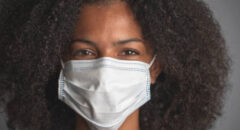
Those with sickle cell suffer from episodes of sudden and severe pain, known as pain crisis. It's usually excruciating pain in both adults and children.
But if that's not enough, those with sickle cell also have to deal with issues surrounding this coronavirus sweeping through the nation.
With nearly 6.61 million positive cases in the US, COVID-19 has been disproportionately affecting the African-American community and exposing health disparities we've known for years.
In states all over the nation, reports of African Americans dying more than any other racial group of COVID-19.
But one 7-year-old boy who has sickle cell and was stricken with COVID-19 has recovered.
It's after several blood transfusions, Nasir Striggs, is on the road to a full recovery.
According to WFAB Channel 9, in April, Striggs went to Baltimore’s Sinai Hospital after his mother, Deshannon Striggs, noticed he was having trouble breathing.
He tested positive for COVID-19, and an X-ray revealed he had pneumonia in both of his lungs.
Nasir’s mother says the entire medical team took really good care of Nasir despite him having sickle cell. The 7-year-old needed three blood transfusions.
“He had to keep getting stuck by the needle because the needle kept coming out,” Striggs said. “To watch him go through that, it was really scary.”
In sickle cell disease patients, a blood transfusion is used to provide normal red blood cells to the patient's body.
Red blood cell transfusions help lessen anemia and reduce the blood's viscosity, allowing it to flow more freely and ease disease symptoms and prevent complications.
Several days into his treatment, Nasir began to bounce back. His mother says support and prayers helped her get through the tough time.
Another consequence of sickle cell is poor oxygen delivery resulting in damage to major organs, including the brain, eyes, lungs, liver, heart, spleen, and kidneys.
According to The Sickle Cell Society website, family members and caregivers of people with sickle cell disease should take appropriate precautions and extra care to avoid bringing COVID-19 home. It's important to constantly monitor patients.
They should wear gloves when coming in contact with blood or body fluids of patients with a COVID-19 infection and thoroughly wash clothes and highly-touched surfaces such as counters, doorknobs, bathroom fixtures, and toilets.
If family members and caregivers show symptoms of COVID-19 themselves, they should avoid coming in contact with the patient until the self-isolation period is complete.
So, what can other COVID-19 patients learn from all of this?
“Just keep the faith. That’s the message, keep the faith,” Deshannon said.









